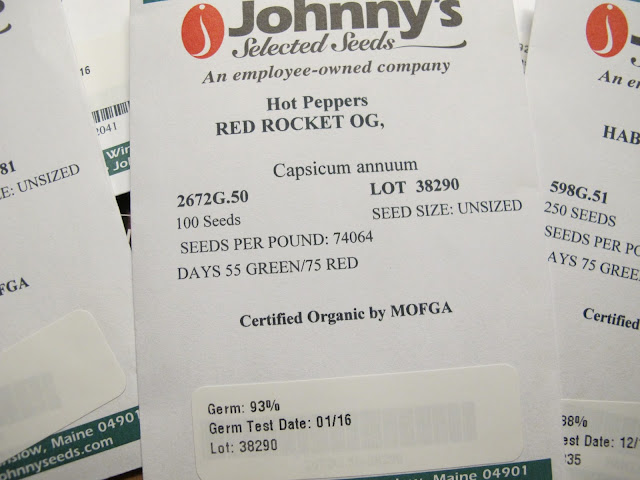PEPPER PATCH
Mailman just delivered my seed order for the new pepper
patch. Growing peppers in our northern climate has been hit or miss for us. One
year there are bright orange Scotch Bonnets, red cayenne and yellow banana
peppers enough to last until next year’s crop. The following year just a few
Jalapeños that we used before summer was gone. Being a lover of peppers both
sweet and hot, I want a consistent, bountiful harvest.
Since we cleared an area to expand our garden this year,
I marked off a six by twelve foot space to designate as the Pepper Patch. I
turned soil, digging out stones large and small. I added top soil, compost and
cow manure. A blanket of snow is covering the pepper patch all winter so the
soil can absorb all the nutrients and be ready for planting this spring. I’ll
add phosphorus and calcium to the soil when the seeds are planted to promote
healthy growth.
My Pepper Patch varieties will run the gamut from sweet
bells to fiery Habaneros, with a medley of varying heat and flavor choices in between. I have
Jalapenos that will go into chili and stir fries. My favorite pepper, cayenne, is
a little hotter than Jalapeños, and will go into just about everything that
calls for a spicy essence. They’ll become the heat in my salsa and chutney.
Check out the recipe for Peach Chutney at the end of the post. A new addition
to the Pepper Patch is a Poblano that can be used for chili rellenos. At a pot-luck
recently, I was served the most delicious rellanos that I
have ever eaten. This
made me want to experiment to make my own. Once I get the hang of it, I’ll post
a chili rellano recipe. Habanero or Scotch Bonnet peppers are among the hottest
around and should be used only for the most daring appetites. Bell peppers are
the most useful of all and go into a plethora of dishes.
Even though the weather is cold, my taste buds are
hankering for some peppery flavor and heat. I’m looking forward to the time for
planting pepper seeds. I’m looking forward even more to pepper harvesting and
spicy culinary endeavors.
PEACH CHUTNEY
Ingredients:
8 large peaches,
peeled and chopped
2 inch piece
ginger root, minced
1 cup cider
vinegar
1 cup honey
1 cayenne
pepper, minced with seeds and ribs
For
milder taste, remove seeds and ribs
¼ tsp turmeric
Put all ingredients into a large pot
Bring to boil and reduce heat to low
Simmer for 2 to 3 hours, stirring occasionally
Use on just about anything. Bon appétit.






























